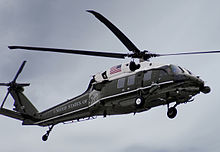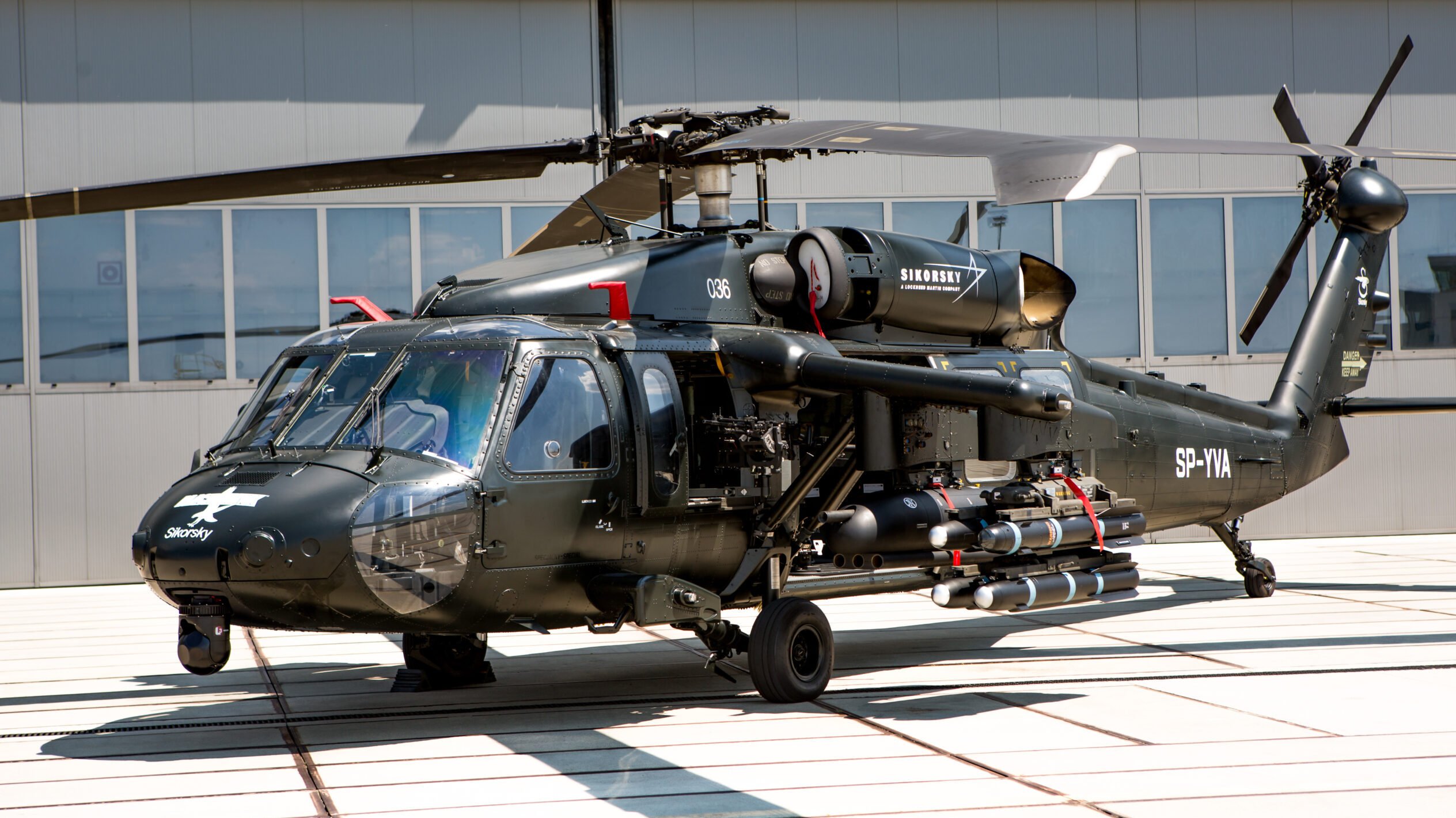Revealing the Sikorsky S 70: Advancements and Advancements in Helicopter Design
Revealing the Sikorsky S 70: Advancements and Advancements in Helicopter Design
Blog Article
High-Performance Multi-Role Rotorcraft Featuring Advanced Cockpit Technologies and Integrated Sensor Solutions
The world of rotorcraft technology has seen remarkable advancements in current times, particularly in the world of high-performance multi-role rotorcraft outfitted with advanced cockpit technologies and flawlessly incorporated sensor systems. These developments have not only augmented the operational capabilities of rotorcraft but have also considerably impacted modern aeronautics operations on numerous fronts. From improved mission flexibility to improved functional effectiveness, the merging of advanced cockpit technologies and integrated sensing unit systems has actually introduced a new era of opportunities for rotorcraft applications. In the following conversation, we will certainly check out the evolution of rotorcraft modern technology, look into the realm of advanced cabin technologies, and check out the ramifications of integrated sensor systems on the functional flexibility and efficiency of modern-day rotorcraft.
Advancement of Rotorcraft Modern Technology
The development of rotorcraft innovation has actually been marked by considerable innovations in aerodynamics, products, and propulsion systems, forming the capabilities and performance of contemporary rotorcraft. Wind resistant renovations have actually boosted the efficiency and ability to move of rotorcraft, enabling increased speed, dexterity, and security throughout flight (sikorsky s 70). Technologies in products, such as making use of composite materials and advanced alloys, have caused lighter yet more powerful rotorcraft frameworks, boosting total efficiency and sturdiness. Furthermore, advancements in propulsion systems, including much more powerful engines and ingenious propulsion modern technologies, have actually made it possible for rotorcraft to achieve greater elevations, faster rates, and higher payloads.
These improvements have not just transformed the capabilities of rotorcraft yet have also broadened their applications throughout different industries, consisting of army, business, and emergency services. The continual evolution of rotorcraft innovation continues to drive technology in the area, pressing the limits of what is possible and forming the future of vertical trip.
Advanced Cockpit Innovations
Building upon the foundational developments in aerodynamics, products, and propulsion systems, the world of rotorcraft innovation now changes focus towards pioneering Advanced Cockpit Innovations. The integration of advanced innovations within the cabin atmosphere plays an important role in boosting the functional capabilities, security, and effectiveness of contemporary rotorcraft. sikorsky s 70. Advanced Cockpit Innovations include a wide array of attributes created to supply pilots with enhanced situational recognition, streamlined information monitoring, and user-friendly control interfaces
Among the key innovations in cabin design is the execution of glass cockpits, which replace conventional analog evaluates with high-resolution display screens. These digital systems supply customizable designs, real-time information integration, and boosted readability, enabling pilots to gain access to crucial details at a glimpse. Advanced avionics systems, such as fly-by-wire controls and increased fact displays, are changing just how pilots interact with the aircraft, enabling for specific control and boosted decision-making capacities.


Integrating innovative cabin advancements not only enhances pilot efficiency but also adds to general mission efficiency and security in complex functional atmospheres. By leveraging state-of-the-art technologies within the cabin, rotorcraft producers are setting new standards for functional excellence and goal success.
Integrated Sensing Unit Solutions
With the advancement of rotorcraft modern technology, the combination of innovative Integrated Sensing unit Equipment has come to be extremely important in improving functional effectiveness and safety and security. These Integrated Sensor Solutions include a broad range of technologies that give essential data for various functions such as navigating, surveillance, targeting, and ecological monitoring. By effortlessly integrating sensing units like radars, cameras, lidar, and infrared systems right into rotorcraft, operators can take advantage of enhanced situational recognition, enhanced mission capabilities, and decreased pilot work.
One trick benefit of Integrated Sensor Systems is their capability to gather real-time data and give actionable insights to pilots and objective operators. For instance, advanced radar systems can find and track look at this website targets over fars away, enabling very early threat detection and effective feedback preparation. Additionally, integrating electro-optical and infrared cams makes it possible for rotorcraft to conduct reconnaissance and surveillance objectives with accuracy and precision.
Essentially, the assimilation of innovative sensing unit technologies right into rotorcraft not just enhances operational efficiency however likewise adds significantly to overall objective success and team safety. As rotorcraft remain to develop, the role of Integrated Sensor Systems will definitely continue to be at the leading edge of technology in the aerospace sector.
Functional Adaptability and Performance
Enhancing operational flexibility and efficiency in rotorcraft is an all-natural development from the integration of advanced Integrated Sensor Equipments. By leveraging the information and understandings offered by these cutting-edge sensor systems, rotorcraft can enhance their efficiency across numerous missions and settings.
Functional convenience encompasses the capability of rotorcraft to adapt to various duties and situations efficiently. With innovative cabin technologies and incorporated sensor systems, rotorcraft can seamlessly shift between jobs such as search and rescue, medical discharge, monitoring, and more. This versatility improves the rotorcraft's capability to fulfill diverse functional requirements without needing comprehensive reconfiguration.
Performance in rotorcraft procedures is essential for maximizing goal efficiency and source usage. Integrated sensing unit systems play a crucial duty in improving functional efficiency by giving real-time data on climate conditions, surface mapping, target tracking, and extra. This data allows pilots to make enlightened choices swiftly, enhance trip courses, conserve fuel, and improve total mission performance.
Influence on Modern Aviation Workflow

Furthermore, the combination of innovative sensors promotes enhanced goal preparation and implementation, my response allowing rotorcraft to perform a variety of jobs with enhanced accuracy. From search and rescue procedures to airborne firefighting and police missions, the abilities of modern rotorcraft outfitted with sophisticated cabin technologies and incorporated sensing unit systems are unparalleled.
In addition, the impact of these innovations extends beyond operational effectiveness to cost-effectiveness and sustainability. By enhancing flight courses, fuel consumption, and maintenance timetables, high-performance rotorcraft geared up with sophisticated cabin innovations and sensing units add to lowering functional costs and environmental effect, making them vital possessions in modern-day aviation operations.
Final Thought
Finally, the high-performance multi-role rotorcraft with advanced cockpit innovations and integrated sensor systems represents a considerable advancement in aeronautics modern technology. These developments improve operational flexibility and efficiency, eventually influencing modern-day aviation operations in a favorable way. The integration of these sophisticated technologies enables improved capabilities and performance in numerous objective situations, showcasing the continued improvement of rotorcraft modern technology in the aviation sector.
The world of rotorcraft modern technology has actually seen notable developments in recent times, particularly in the world of high-performance multi-role rotorcraft equipped with advanced cockpit modern technologies and flawlessly incorporated sensing unit systems. From improved goal adaptability to boosted operational effectiveness, the convergence of advanced cabin innovations and incorporated sensing unit systems has ushered in a brand-new period of opportunities for rotorcraft applications. In the adhering to discussion, we will certainly check out the evolution of rotorcraft technology, dig into the world of sophisticated cockpit developments, and check out the implications of integrated sensor systems on the operational versatility and performance of contemporary rotorcraft.

Report this page